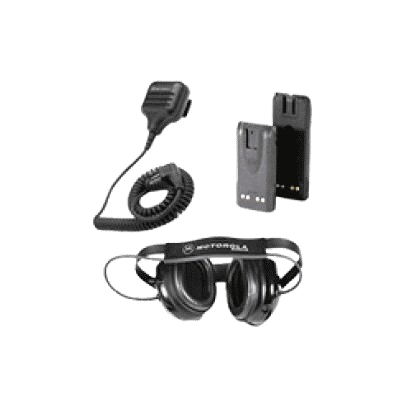If you use a walkie-talkie or two-way radio, then you know the standard antenna it comes with. Those antennas are short and moderately sturdy to make usage convenient, but they don’t offer the best performance.
For this reason, most of us need to switch between different types of antennas. However, it’s a tricky and time-consuming thing to choose and test the right two-way radio antenna. But worry not; from this article, you’ll learn which antenna you should get for the best performance.
Two-Way Antenna Types
To know which antenna you need, the very first thing you need to do is know about the types of antennas properly. It will help you get the perfect antennas and swap them strategically when necessary. Some different types of antennas are:
External Antenna
External antennas are used in external environments, and there are many sizes and types of them. These antennas can be short to use in handheld transceivers or moderately large to use for mounting on a vehicle temporarily or permanently. Also, there can be even larger external antennas to help communicate between different base stations.
Mobile Antenna
Mostly in a vehicle, you can use a two-way radio as a mobile radio by using a separate antenna. This type of antenna will offer more range, more efficiency, and a better ground connection. One key aspect for knowing what antenna is a mobile one is that most of them are coiled in the middle.
Directional Antenna
Directional antennas don’t radiate the signal all 360 degrees around, but just in a specific direction. These antennas are also very large. Specifically, for any precise job where the direction is fixed, these antennas are used. But for everyday usage or emergency jobs, it’s not suitable.
UHF Antenna
For UHF bands that operate from around 450 MHz to 750 MHz frequency, UHF antennas are used. UHF antennas are better suited for both indoor and outdoor use but the range they offer isn’t so great.
VHF Antenna
The antenna specifically suited for the frequency range around 100 MHz to 225 MHz, or the VHF band, is known as the VHF antenna. A VHF antenna is suited for use outdoors and in open rural areas with fewer obstacles.
700-900 MHz Antenna
These antennas operate in the frequency band of about 764-870 MHz. Usually, the emergency or safety officials like firefighters and police officers use this antenna type.
Stubby Antenna
Just like their name suggests, the stubby antennas are short, about 3-4 inches long. This antenna is popular among users for everyday use because the length of the antenna makes it less intrusive and hassle-free. However, this antenna can’t offer you wide range or high gain.
Whip Antenna
The long, thin antennas you usually see in radios are known as whip antennas. They are usually 7 to 8 inches long; that’s why they have more gain, which helps increase the range of the radio. However, the drawbacks of whip antennas are that you can’t sit comfortably while keeping the walkie-talkie on your waist belt, you can’t use them in congested places where there isn’t much opening over the head, and some areas might not support that length of antenna.
Helical Antenna
Helical antennas are also known as Heliflex antennas. These types of antennas are thicker but vary in length. But just like whip antennas, helical antennas will offer you a wide range and coverage for an effective experience.
How to Choose the Right Antenna?
 Other than the types of antenna for walkie-talkies, you’ll need to keep in mind some other key aspects while choosing the right antenna for your two-way radio. They are:
Other than the types of antenna for walkie-talkies, you’ll need to keep in mind some other key aspects while choosing the right antenna for your two-way radio. They are:
Frequency Compatibility
This is the most important factor in choosing the perfect antenna for your radio. You’ll need an antenna with the exact frequency that your radio operates on. For example, if you attach a VHF antenna to your UHF antenna, it will never work properly.
GPS
Some of the walkie-talkies available now have an integrated GPS system. And if that two-way radio uses GPS, you’ll also need an antenna with GPS capability.
Connector Type
Different walkie-talkies have different types of connectors and connecting spots. BNC, PL-259, and SMA are some of the common connectors for two-way radios. Make sure the antenna connector matches the radio, or it’ll be a waste.
Directionality
There are specific directional antennas and also full-coverage antennas. If your two-way radio is directional, you’ll require an antenna for that exact direction.
Regulations
Regulations regarding two-way radios change from place to place. Some states won’t allow you to use certain types of antennas or any antenna higher than a specific height. Make sure to research thoroughly about the regulations in your area or get advice from local professionals before randomly buying an antenna.
Budget
Antennas have a wide range of prices. You don’t need to buy the most expensive ones for the best experiences, and neither should you buy the cheapest ones. Just make sure it’s good for your radio and affordable.
Tips for the Perfect Antenna Installation
After you get your desired antenna, you’ll need to install it properly for the best experience. Here are some of the tips that can help you through the installation:
- Make sure the antenna mounting area is dry and clean before installation.
- Avoid any metal surface or metal covered by vinyl or fiberglass, as they can affect the radio range.
- Ensure that the mounting location is within the cable range.
- Carefully install the antenna and cable so that they don’t get damaged.
Conclusion
Choosing the right two-way radio antenna largely depends on where you’ll use your walkie-talkie and the purpose of using it. That’s why, when you’re confused or have lingering hesitations even after researching antennas thoroughly, you better contact a local radio service. The professionals can guide you on choosing the right antenna while making sure no law is breaking.





